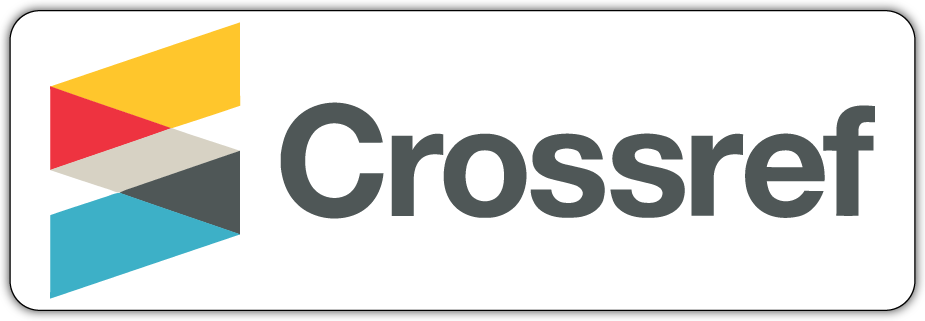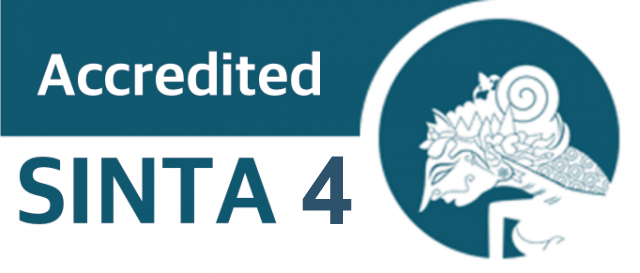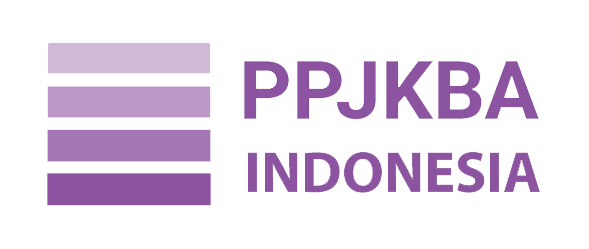Impact Of Linguistic Intelligence And Motivation On Arabic Mastery Among Medical Student
Abstract
Arabic language learning at UIN Maulana Malik Ibrahim Malang is part of the Special Arabic Language Development Program (PKPBA), which must be followed by all students, including students of the Medical Study Program. Diverse educational backgrounds and differences in study focus make mastering Arabic a challenge. On the other hand, medical students generally have high cognitive intelligence in a compound manner; in the context of language education, linguistic verbal intelligence is the key, accompanied by high learning enthusiasm as well. This study aims to analyze the effect of verbal linguistic intelligence and learning motivation on medical students' mastery of Arabic. This research uses a mixed-method approach with quantitative data as primary and qualitative data as supporting, collected through observation, interviews, questionnaires, and documentation. Quantitative analysis was conducted with multiple linear regression and partial test (t-test), while qualitative analysis used the Miles and Huberman model. The results showed that partially verbal linguistic intelligence has a significant effect on Arabic language mastery (sig. 0.004), as well as motivation (sig. 0.000). Simultaneously, however, only motivation remained significant (sig. 0.000), while intelligence became insignificant (sig. 0.259), indicating that learning motivation was the dominant factor. Qualitative findings support these results, showing that phonetic and semantic aspects are easier to master, while syntax and praxis still require more attention in the learning process.
Keywords
Full Text:
PDFReferences
Abidin, Z., & Fahmi, A. B. (2023). Pemerolehan Bahasa Kedua Model Terpimpin: Pembelajaran Bahasa Arab Di Ranting Muhammadiyah Mekarjaya Oleh Ustadz Kahar Chalasta. Al-Ittijah : Jurnal Keilmuan Dan Kependidikan Bahasa Arab, 14(1), 34–50. https://doi.org/10.32678/al-ittijah.v14i1.5699
Al Haqiqy, M. S. I., Muassomah, M., & Mufidah, N. (2024). Pembelajaran Efektif Maharah Qira’ah Untuk Siswa Non Pesantren. Al Mi’yar: Jurnal Ilmiah Pembelajaran Bahasa Arab Dan Kebahasaaraban, 7(2), 740. https://doi.org/10.35931/am.v7i2.3987
Azizah, N., & Abdul Wahab, M. (2022). Implementasi Teori Verbal Linguistic Intelligence Dan Interpersonal Intelligence Dalam Pembelajaran Mahârat Al-Kalâm Dan Mahârat Al-Qirâ’ah. Arabi : Journal of Arabic Studies, 7(2), 208–224. https://doi.org/10.24865/ajas.v7i2.510
Bidaoui, A. (2021). A Perceptual Perspective of the Impact of Motivation on Learning Arabic as a Second Language in Light of Self-Determination Theory. International Journal of Arabic Linguistics, 7(2), 94–108. https://doi.org/10.34874/PRSM.IJAL-VOL7.27488
Billones, I. F. & Gloria P. Gempes. (2024). The Moderating Effect Of Verbal Linguistic Intelligence On The Relationship Between Speaking Anxiety And Communication Skills Among English Major Students. Epra International Journal of Multidisciplinary Research (IJMR), 50–56. https://doi.org/10.36713/epra15382
Dewhirst, C. B., Hott, B. L., & Randolph, K. M. (2025). Mixed-Methods Approaches to Enhance Rural Special Education Research. Rural Special Education Quarterly, 87568705251332594. https://doi.org/10.1177/87568705251332594
Dewi, D. S., & Wilany, E. (2019). Hubungan Antara Kecerdasan Linguistik Verbal Dan Kemampuan Membaca. JURNAL DIMENSI, 8(1). https://doi.org/10.33373/dms.v8i1.1859
Fauzi, Moh. F., & Anindiati, I. (2021). Improving the Motivation of Students in Arabic Language Learning through Learning Management System. Izdihar : Journal of Arabic Language Teaching, Linguistics, and Literature, 4(3), 257–274. https://doi.org/10.22219/jiz.v4i3.19110
Fuad Hasim, M., Akhmad Taufiq, M., Baihaqi, M., Amaliyah, N., & Rachmawati, E. (2025). Psychological Impact Of UIN Sunan Ampel Surabaya Students On Academic Arabic Language Mastery. Al Mi’yar: Jurnal Ilmiah Pembelajaran Bahasa Arab Dan Kebahasaaraban, 8(1), 11. https://doi.org/10.35931/am.v8i1.4337
Hilmi, D., Toifah, N., & Sa’diyah, H. (2024). Linguistic Intelligence in Arabic Learning in Islamic Religious College Students. Ta’lim al-’Arabiyyah: Jurnal Pendidikan Bahasa Arab & Kebahasaaraban, 8(2), 234–248. https://doi.org/10.15575/jta.v8i2.37714
Jama, O. (2022). Exploring the Motivation Orientations for Learning Arabic as L2 Based on Self Determination Theory. International Journal of Linguistics and Translation Studies, 3(1), 74–87. https://doi.org/10.36892/ijlts.v3i1.202
Lazear, D. (1999). Eight ways of knowing: Teaching for multiple intelligences: A handbook of techniques for expanding intelligence (Internet Archive). Arlington Heights, Ill. : SkyLight Professional Development. https://archive.org/details/eightwaysofknowi0000laze/page/n3/mode/2up
Leko, M. M., Hitchcock, J. H., Love, H. R., Houchins, D. E., & Conroy, M. A. (2023). Quality Indicators for Mixed-Methods Research in Special Education. Exceptional Children, 89(4), 432–448. https://doi.org/10.1177/00144029221141031
Mu’awanah, E., & Insani, R. (2025). Analysis of Multiple Intelligences in ‘Arabiyah Baina Yadaik Book. Al Mi’yar: Jurnal Ilmiah Pembelajaran Bahasa Arab Dan Kebahasaaraban, 8(1), 1–10. https://doi.org/10.35931/am.v8i1.4205
Mulyanto, D., & Kaltsum, N. A. (2025). Ta’tsīr Barnāmaj Fatḥ al Kutub ’alā Targīb al Ta‘allum al-Dzātī li Ṭālibāt al Ṣaff al Khāmis Ma‘had Dār al Salām Gontor al Ḥaram al Tsālits lil-Banāt. Al Mi’yar: Jurnal Ilmiah Pembelajaran Bahasa Arab Dan Kebahasaaraban, 8(1), 254. https://doi.org/10.35931/am.v8i1.4741
Rasyidah, N., Nurdinsyah, M. M., Uqba, M. S. S., Ma’ali, A., & Ibrahim, F. M. A. (2024). Analysis of Al-‘Arabiyyah Lil Hayah Books as Teaching Material from the Perspective of Brian Tomlinson and Hitomi Masuhara’s Theory. Mantiqu Tayr: Journal of Arabic Language, 4(2), 717–739. https://doi.org/10.25217/mantiqutayr.v4i2.4929
Ridwan, M. F., Farid Qomaruddin, Ali Ridho Saleh Mulachela, & Umar Al Faruq. (2024). Linguistic Intelligence Development Strategy Through Student Activities: A Case Study in Intensive Arabic Language Learning. Izdihar : Journal of Arabic Language Teaching, Linguistics, and Literature, 7(2). https://doi.org/10.22219/jiz.v7i2.32216
Rizka Amalia & Nabilla. (2024). Analisis Penerapan Kecerdasan Majemuk (Multiple Intelligences) dalam Pembelajaran di Madrasah. Bustanul Ulum Journal of Islamic Education, 2(1), 73–82. https://doi.org/10.62448/bujie.v2i1.50
Root, J. R., & Lindstrӧm, E. (2024). Embracing Mixed Methods Research in Special Education. Research and Practice for Persons with Severe Disabilities, 49(4), 231–241. https://doi.org/10.1177/15407969241293420
Rusu, C. (2024). The development of linguistic intelligence in little students—Empirical research of the experience of teachers in Romania and Republic of Moldova. Univers Pedagogic, 81(1), 45–50. https://doi.org/10.52387/1811-5470.2024.1.05
Sá-Leite, A. R., Flores, C., Eira, C., Haro, J., & Comesaña, M. (2023). Language balance rather than age of acquisition: A study on the cross-linguistic gender congruency effect in Portuguese–German bilinguals. Bilingualism: Language and Cognition, 26(5), 1079–1092. https://doi.org/10.1017/S1366728923000378
Sogutlu, E. (2018, September 17). Multiple Intelligences and Foreign Language Learning: Possible Relationship. Proceedings of the 3rd International Conference on New Findings in Humanities and Social Sciences. 3rd International Conference on New Findings in Humanities and Social Sciences. https://doi.org/10.33422/3hsconf.2018.09.01
Ubaid, A., & Maghfur, T. (2021). Pengembangan Tadribat Pembelajaran Istima’ Buku Al ‘Arabiyah Lil Hayah Berbasis Online. Lugawiyyat, 3(1), 57–76. https://doi.org/10.18860/lg.v3i1.12320
Wei, Y. (2025). The Application of Self-Determination Theory in Promoting Language Learning Motivation.DOI: http://dx.doi.org/10.35931/am.v8i2.5142
Refbacks
- There are currently no refbacks.
Copyright (c) 2025 Al Mi'yar: Jurnal Ilmiah Pembelajaran Bahasa Arab dan Kebahasaaraban

This work is licensed under a Creative Commons Attribution-ShareAlike 4.0 International License.
Al Mi'yar: Jurnal Ilmiah Pembelajaran Bahasa Arab dan Kebahasaaraban
Index by:
![]()
![]()
![]()
![]()
![]()
![]()
![]()
![]()
![]()
![]()

Publish by:
Program Studi Pendidikan Bahasa ArabSekolah Tinggi Ilmu Al-Qur'an AmuntaiContact us:
Address: Jl. Rakha Pakapuran, Amuntai Utara
Kabupaten : Hulu Sungai Utara
Kode Pos : 71471
Provinsi : Kalimantan Selatan
Email: jurnal.almiyar@gmail.com

Ciptaan disebarluaskan di bawah Lisensi Creative Commons Atribusi-BerbagiSerupa 4.0 Internasional.
___________________________________________________________________________________________________________________________________________________________________
Ciptaan disebarluaskan di bawah Lisensi Creative Commons Atribusi-BerbagiSerupa 4.0 Internasional.

 slot88
slot88








